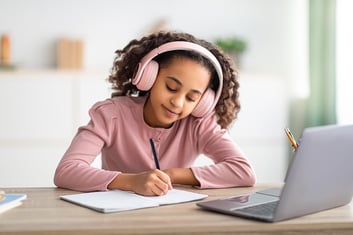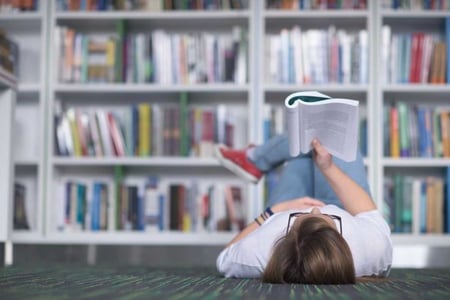In education, the ways that students learn are as diverse as the subjects they study. They all have a special power to understand things in a classroom environment differently than their peers. But identifying that special power can sometimes be difficult. That's why it's important for students to communicate with their teacher as catering to different learning styles is essential for teachers and educators to create an inclusive and effective learning environment. So, let's do a quick review of some of the common learning styles, diving into seven distinct types: auditory, kinesthetic, visual, reading, writing, solitary, and social learners.

Auditory Learners: Auditory learners find their passion in the realm of sound. They thrive when information is presented through spoken words, discussions, and lectures. These students have the ability to absorb information from lectures and audio resources. Subjects such as language arts, music, and foreign languages often resonate with auditory learners, as they excel in tasks involving listening, spoken communication, and auditory memory.

Kinesthetic Learners: Kinesthetic learners are the embodiment of hands-on education. They absorb information best through movement, touch, and practical experiences. Physical activities like sports, dance, and science experiments ignite their enthusiasm. In subjects that involve interactive learning, like physical education, art, shop class, and home-economics - kinesthetic learners thrive as they can engage their senses and bodily coordination.
.jpg?width=284&height=189&name=download%20(1).jpg)
Visual Learners: Visual learners have an artistic flair for learning. They grasp concepts when presented through images, diagrams, graphs, and videos. Subjects like geometry, geography, visual arts, and many others captivate their attention, allowing them to excel in tasks that demand spatial visualization, pattern recognition, and artistic expression.
.jpg?width=380&height=225&name=download%20(2).jpg)
Reading Learners: For those who find solace in the written word, reading learners are the bibliophiles of the classroom. They excel when information is presented in written form, such as textbooks, articles, and written instructions. Literature, history, and research-based subjects appeal to these students, enabling them to master analytical and critical thinking skills.

Writing Learners: Writing learners have a knack for crafting words. They express themselves most effectively through written communication, be it essays, reports, or creative writing. English, journalism, and philosophy are subjects that capture their imagination, allowing them to harness their writing skills and excel in assignments that demand eloquence and clarity.

Solitary Learners: Solitary learners flourish when they have the freedom to learn independently. They thrive in quiet environments where they can process information at their own pace. Subjects that require self-discipline, deep introspection, and individual research, such as computer programming, astronomy, and philosophy, are well-suited for solitary learners.
Social Learners: Social butterflies of the educational landscape, social learners flourish in group settings. They learn best through interactions, discussions, and collaborative projects. Subjects like group-based sciences (biology, psychology), teamwork-driven fields (business, theater), and debate-oriented disciplines (law, political science) allow them to leverage their interpersonal skills to excel.
It's crucial to recognize the diverse spectrum of learners for everyone, students, teachers, and parents. By tailoring lessons to accommodate auditory, kinesthetic, visual, reading, writing, solitary, and social learners, we create more opportunities for ourselves and ultimately, an effective educational experience. Remember though, that these seven different types of learners are not the only kinds of learners. Not only is the spectrum of learning a vast network of possibilities for students, you could also have a combination of all these traits. Acknowledging these different learning styles empowers everyone to reach their full potential, fosters a deeper love for learning, and cultivates a well-rounded understanding of the subjects that shape their academic journey. Make sure to subscribe and stay tuned for more blogs on the amazing learning powers each one of our kids possess!
Want to learn more? Check out this video:




Comments